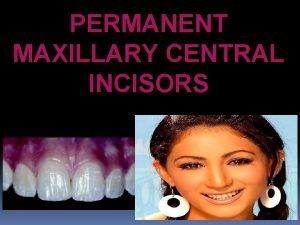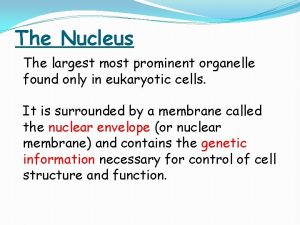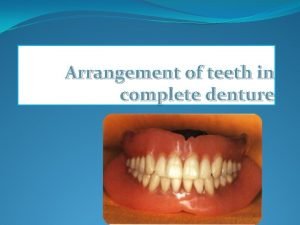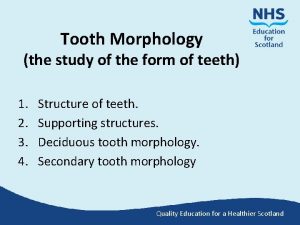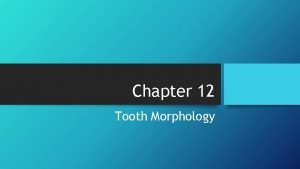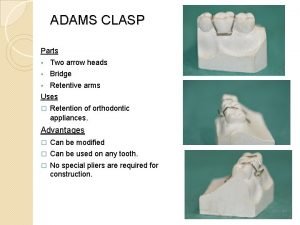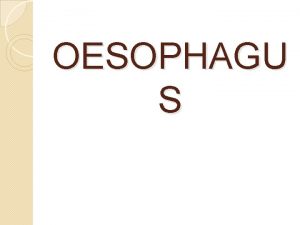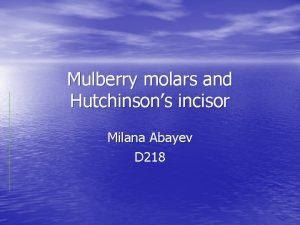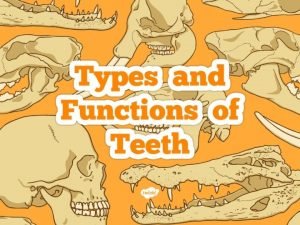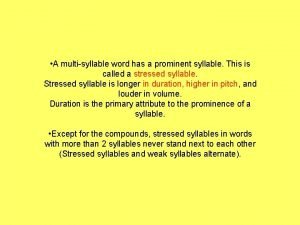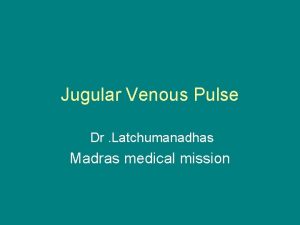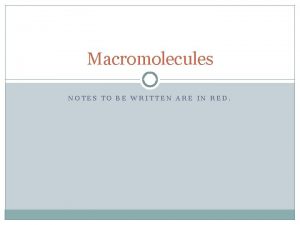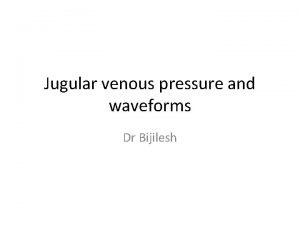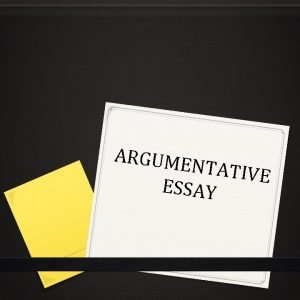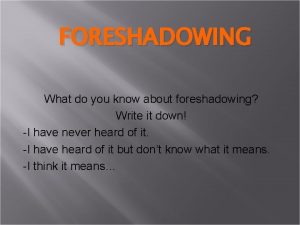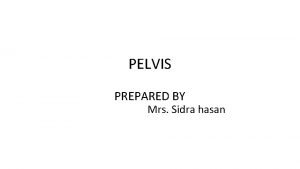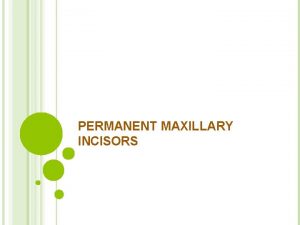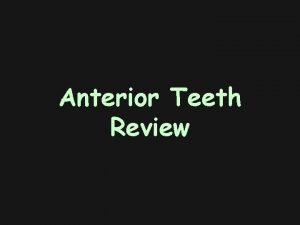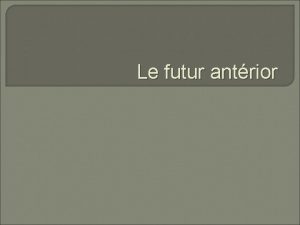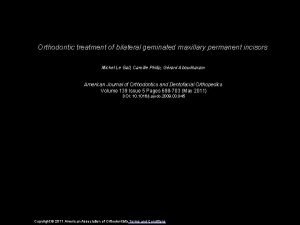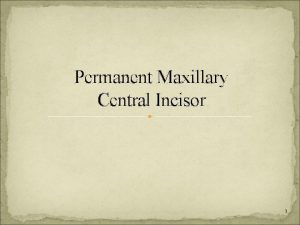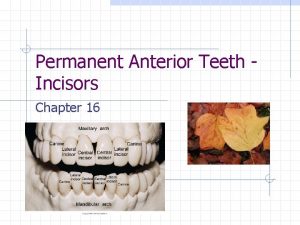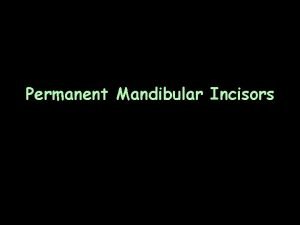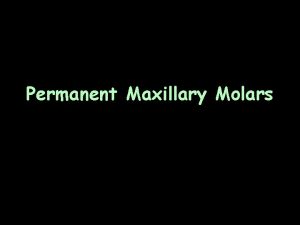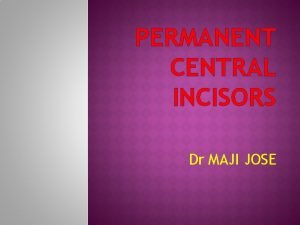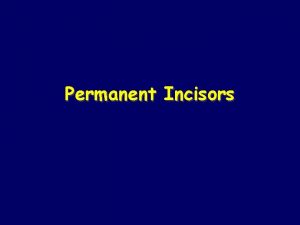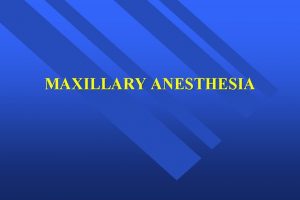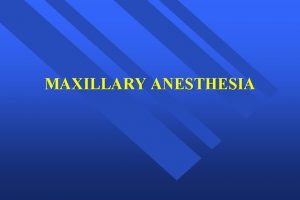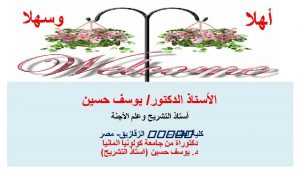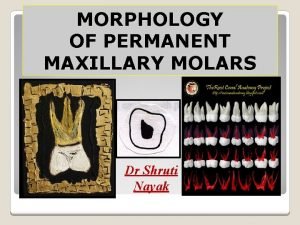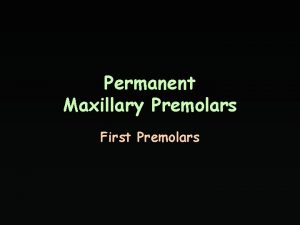PERMANENT MAXILLARY ANTRIOR TEETH MAXILLARY INCISORS Most prominent






















- Slides: 22

PERMANENT MAXILLARY ANTRIOR TEETH

MAXILLARY INCISORS • • • Most prominent Widest MD Straight incisal edge Straight M Slightly curved D

Labial view • • • Convex at cervical portion of crown Mamelons – visible when fresh Development lines divide into 3 parts D rounded at contact Root – cone, blunt apex

Lingual view • Lingual fossa, bordered by M and D marginal and incisal ridges • prominent cingulum • Crow & root taper L • L portion of the root – narrower than F

Mesial view • triangular outline • incisal ridge of the crown is aligned on the long axis of the tooth & the root apex • The greatest cervical curvature in the mouth • Root – cone shaped, blunt

Distal view • Little difference with M • Less cervical curvature

Incisal view • crown is roughly triangular in outline • the incisal edge is nearly a straight line

Maxillary Lateral Incisor • • resembles the central incisor, narrower MD Smaller All futures more prominent

Labial view • Distal incisal angle is more rounded • Cervical curvature is more rounded • Crown more convex (more rounded)

Distal / Mesial view • line through the long axis of the tooth bisects the crown • Root appears longer • D cervical curvature bigger than M

Incisal view • resemble either the central or the canine to varying degrees (with large cingulum) • more rounded than the mesial incisal angle

Root • tip of the root may incline distally • Straight, thick, cylindrically shaped

Pulp cavity • Varies in size • Smaller with age • One root canal with three (or one or two) pulp horns in the center

Maxillary Canine • • longest and most stable of teeth in the mouth Self cleaning qualities cornerstones of the dental arch (canine eminence) only teeth in the dentition with a single cusp

• Resemble an incisor – four developmental lobes • Middle lobe – a single cusp • L lobe larger than incisors • Cingulum has the greatest development of all anterior

Labial • Crown narrower MD than incisors • Cervicoincisal length is much large • M crown is straighter, convexity at contact • D crown more rounded • Developmental lines – 2 shallow depressions • Well developed middle lobe • Root slender than crown, blunt apex, turns sharply distal

Lingual view • Distinct M and D marginal ridges • Well-devloped cingulum, and the lingual ridge runing from cusp tip to cingulum • L ridge extends from the cusp tip to the cingulum, dividing the lingual surface into mesial and distal fossae • Root is narrow than F, cross section triangular

Mesial view • • • Bulky cingulum region L line more convex triangular outline Root broad LF & long M surface – convex, cervical can be flat • Developmental depression appears divides single root in two

Distal view • Cervical – less curvature • D marginal ridge – more developed than M • D surface – more concavity at contact • More pronounced developmental root depression

Incisal view • thicker LF than MD • tip of the cusp is displaced labially (F) • Larger LF from any anterior teeth

Root • Longest • Tapers from F toward L • Apex points D

Pulp cavity • Large pulp chamber and single canal • One single pulp horn which extends toward the tip of the cusp
 Permanent maxillary incisors
Permanent maxillary incisors G j mount classification of caries
G j mount classification of caries Most prominent organelle in eukaryotic cells
Most prominent organelle in eukaryotic cells Newsletter nameplate
Newsletter nameplate Cieszynski rule of isometry
Cieszynski rule of isometry Occlusal plane
Occlusal plane Maxillary teeth
Maxillary teeth Chapter 12 tooth morphology short answers
Chapter 12 tooth morphology short answers Enamel rods in gingival third of primary teeth
Enamel rods in gingival third of primary teeth Coffin spring indication
Coffin spring indication 25 cm from incisors
25 cm from incisors Hutchinson incisor
Hutchinson incisor Functions of the canine
Functions of the canine Disadvantage of consensus
Disadvantage of consensus Calendar stressed syllable
Calendar stressed syllable Difference between islam and christianity chart
Difference between islam and christianity chart Jvp normal
Jvp normal What macromolecule is a prominent part of animal tissues
What macromolecule is a prominent part of animal tissues X and y descent
X and y descent Ntative
Ntative Evocative foreshadowing
Evocative foreshadowing Prominent ischial spine
Prominent ischial spine For centuries prominent thinkers have pondered
For centuries prominent thinkers have pondered
